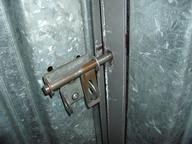Quiz Answer Key and Fun Facts
1. Which part of the Tower of London was the first part to be built?
2. Does a changing of guard take place at the Tower of London?
3. Which of the following monarchs died at the Tower of London?
4. Which of the following days are Royal Salutes NOT fired on at the Tower of London?
5. How did the Bloody Tower acquire its name?
6. What might you see in the Jewel House at the Tower?
7. Which of these has the Tower of London NOT been in its long history?
8. How many people have been executed within the walls of the Tower of London?
9. In what year was the last prisoner held in the Tower of London?
10. According to legend, what will happen if the ravens that live at the Tower of London desert their home?
Source: Author
succubus
This quiz was reviewed by FunTrivia editor
thejazzkickazz before going online.
Any errors found in FunTrivia content are routinely corrected through our feedback system.

